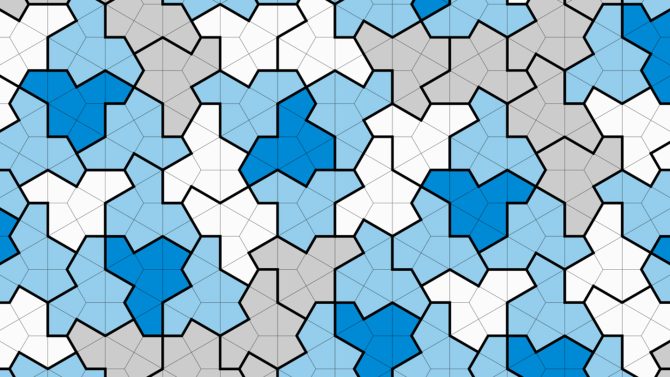
Ten years ago I boldly reviewed a book called Reinventing Bach, despite the fact that I'm musically illiterate. Against some coworkers' advice, I've also posted a rather negative review of an up-and-coming author's book (which several people told me they appreciated), and even "reviewed" a book I hadn't read. Now I'm going to try to convince you that a science book, much of which I didn't understand, is worth your time.
"Impossible!" you say. Funny you should say that, because the book is Paul Steinhardt's The Second Kind of Impossible. The title grew out of the author's interactions with none other than the famous physicist Richard Feynman, and is shorthand for both Feynman's exclamation when things happen that shouldn't, and the grit and determination that helps Steinhardt with the complicated quest described within.
The author, a theoretical physicist, seeks nothing less than a new form of matter.
Physics. Math. Astronomy. Big Science. High Technology. But also, Adventure. Russians. Art. Internecine Rivalry. Giant Bears.
Overlapping serendipities got me started on this scientific thriller, bits and pieces coming together like a Venetian mosaic. Did you see the recent news of the "hat" tiling pattern that never repeats? It reminded me of my longtime fascination with M.C. Escher, the mind-twisting artist who, after seeing the Moorish tile work at the Alhambra spent years investigating what he called "regular divisions of a plane."
Tiling lays the groundwork, so to speak, of The Second Kind of Impossible, which also includes all kinds of other familiar bits: D&D's icosahedral dice, Buckminster Fuller's closest packing of spheres, Kurt Vonnegut's Ice-Nine, X-ray crystallography (an important part of The Double Helix), Barry Lopez's Antarctic meteorite search, Ken Deffeyes of John McPhee's Basin and Range, and even Linus Pauling.
It's 1981. Paul Steinhardt is studying how atoms arrange themselves, and how that changes with temperature. Think of the phases of water, for example, or how carbon might present itself as graphite or diamond. Atomic symmetry is key, and as an example Steinhardt describes how icosahedral crystals can't fit together without gaps (grab a handful of 20-sided dice and it's obvious). But what happens when the temperature change that triggers a shift in atomic arrangement happens far more rapidly than usual? Essentially, such an agglomeration might become not a crystal, but, in theory, a "forbidden" type of matter called a quasicrystal.
Steinhardt's "impossible" concept of quasicrystals initially encountered resistance, but slowly gained acceptance. Eventually they were even made in the lab. But did such "loopholes in the rules of symmetry" exist in nature? Surely a few would have been found if they did, so at Deffeyes’ urging Steinhardt and his team surveyed the geological collections and diffraction pattern databases (they're a thing) of universities and museums around the world.
Which - years later - led the scientists to the frozen mud of Kamchatka.
Cue the giant bears.
I’m leaving out many details, but trust me that this out of the ordinary science book reads much like a thriller, especially the second half. Perhaps because the action moves from the lab and scientific conferences to the Russian outback, where esoteric theoretical physics gets pushed aside by clouds of hungry mosquitos, oversized Land Rovers sliding in the mud, equipment failures, and other mundane details of exploration in the frigid north.
Searching for the proverbial needle in a haystack is nothing compared to the quest for a few minuscule mineral grains somewhere on an entire planet, but the team is determined. Are there really natural quasicrystals, the existence of which would go against the rules of earthly physics? Impossible! How could there be?...
-Jake Vail is an Information Services Assistant at Lawrence Public Library.


Add a comment to: Impossible!